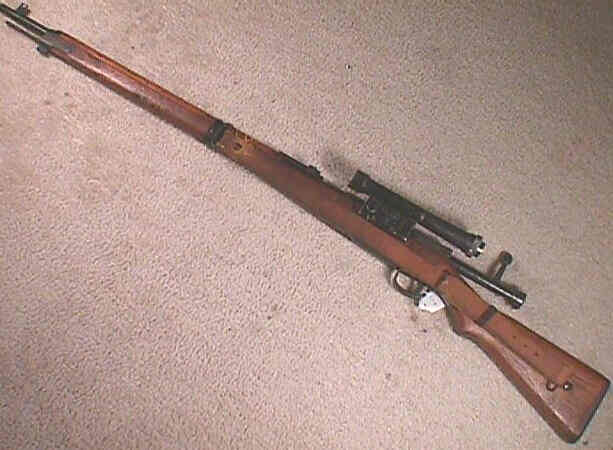
Sniper Version of the Model 99 Rifle
Refer to the home page for information on sniper scope manufacturers logos and faked sniper rifles.
The following information is from the book The Japanese Type 99 Short Rifle, page 20.
"Model 99 Sniper Rifle
Nagoya Arsenal was the principal producer of a sniper version of the Model 99 rifle. The Nagoya sniper was assembled using various transition parts, i.e., (1) 2-screw front band; (2) round cleaning rod catch and short cleaning rod; (3) rear band without monopod, plain, slotted or plain, solid; and (4) rear sight with or without anti-aircraft arms attached.
The Arsenal produced approximately 10,000 sniper versions which are identical to the Model 99 with the exception of a side-mount scope base and a longer, curved-bolt handle. The initial 5,000 and final 2,000 snipers were equipped with a 4-power telescopic sight, while snipers in the 5 -7,000 serial number range were equipped with a 2.5-power telescopic sight.
If the production of these rifles was concurrent with standard Model 99 rifles using identical transition parts, the sniper version was manufactured during the production of the 5th and 6th Series rifles."
The following information is from the book The Japanese Type 99 Short Rifle, page 33.
"Model 99 Sniper Rifle
Kokura, at some period during the production of the initial design, manufactured 800+ sniper versions of the Model 99 equipped, with one exception, with a side-mounted 2.5-power telescopic sight. One rifle has been reported with a 4-power telescopic sight base. The Kokura sniper rifle is identical to early Yokura Model 99 rifles with the exception of the side-mount scope base and a longer, curved-bolt handle. None of the Kokura snipers were assembled with transition parts, and it is probable that production at Kokura was terminated prior to the beginning of sniper production at Nagoya.
The "Book of Rifles", page 319, states, "In 1941, a Type 99 rifle with a 4- power scope was developed for sniping - this weapon was officially adopted in June, 1942." Since the production of the 2.5-power Kokura sniper apparently preceded the 4-power sniper, either (1) the Kokura sniper was adopted before 1942, or (2) the rifle adopted in June 1942 was a Kokura 2.5-power model. Figure III reflects the second premises. In June 1942, the Kokura Arsenal was producing the initial part of the 23rd Series, the early Model 99 configuration."

Picture number 800 (picture courtesy of Earl Battey) shows the Model 99 sniper rifle.
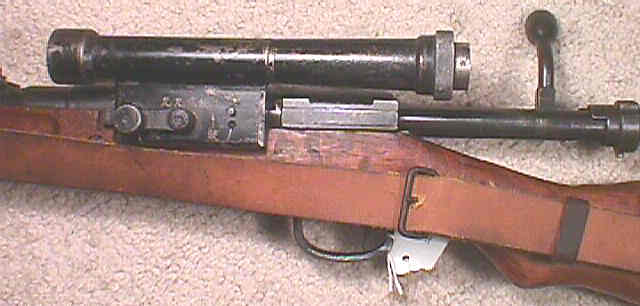
Picture number 801 (picture courtesy of Earl Battey) shows a close-up view of the sniper scope attached to the rifle.
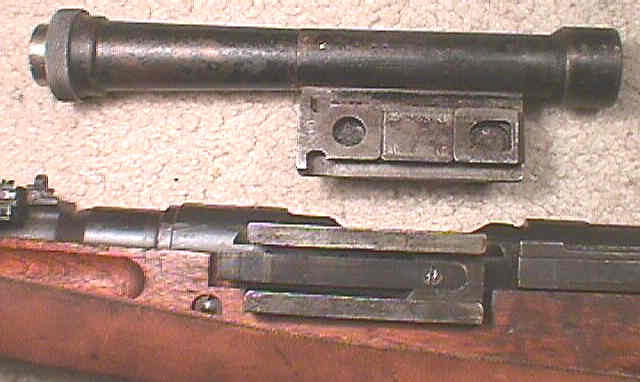
Picture number 802 (picture courtesy of Earl Battey) shows the scope detached from the mount on the left side of the rifle.
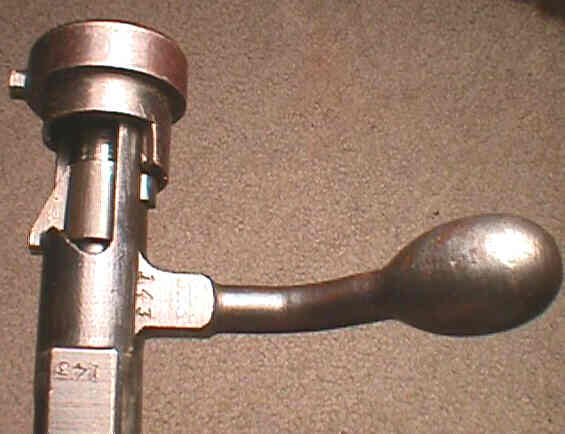
Picture number 810 (picture courtesy of Earl Battey) shows the modifications made to the bolt handle so that the bolt mechanism could be operated with the scope attached.
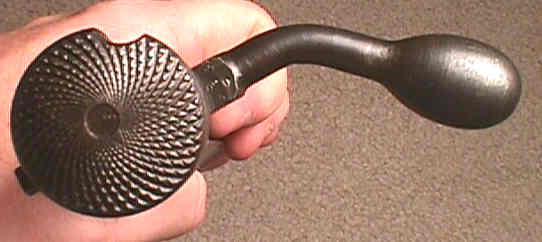
Picture number 811 (picture courtesy of Earl Battey) shows another view of the modifications made to the bolt handle.
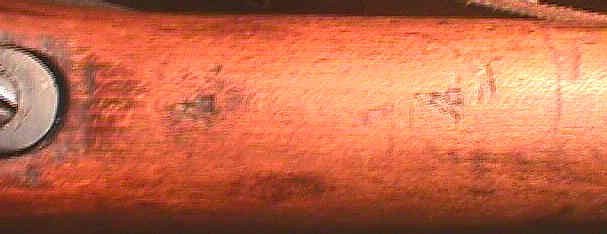
Picture number 820 (picture courtesy of Earl Battey) shows the inspection marks on the stock.
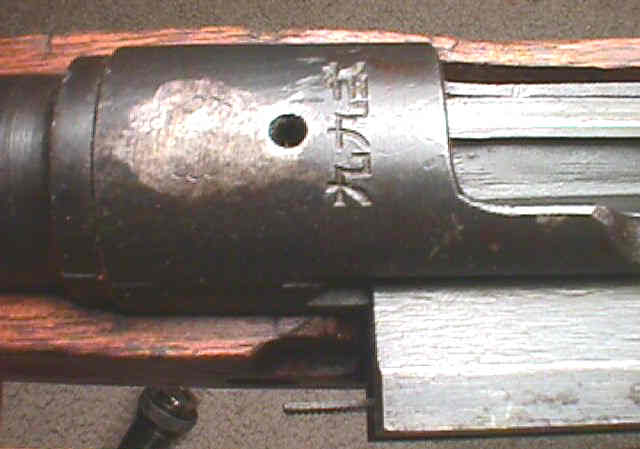
Picture number 821 (picture courtesy of Earl Battey) shows the markings on the top of the receiver ring. The mum has been ground.
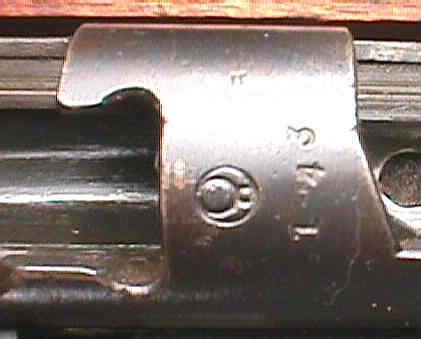
Picture number 822 (picture courtesy of Earl Battey) shows the markings on the receiver bridge. Because the scope mount covers the left side of the receiver, the markings usually found on the left side of the receiver were moved to the top of the receiver bridge.